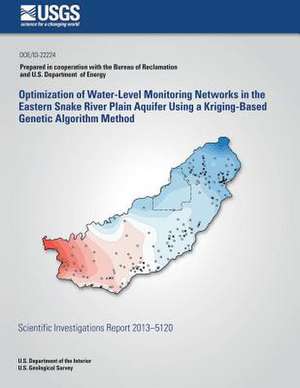Optimization of Water-Level Monitoring Networks in the Eastern Snake River Plain Aquifer Using a Kriging-Based Genetic Algorithm Method
Autor Jason C. Fisheren Limba Engleză Paperback
Preț: 116.35 lei
Nou
Puncte Express: 175
Preț estimativ în valută:
22.27€ • 24.18$ • 18.70£
22.27€ • 24.18$ • 18.70£
Carte disponibilă
Livrare economică 02-16 aprilie
Preluare comenzi: 021 569.72.76
Specificații
ISBN-13: 9781500551698
ISBN-10: 1500551694
Pagini: 82
Dimensiuni: 216 x 279 x 4 mm
Greutate: 0.21 kg
Editura: CREATESPACE
ISBN-10: 1500551694
Pagini: 82
Dimensiuni: 216 x 279 x 4 mm
Greutate: 0.21 kg
Editura: CREATESPACE
